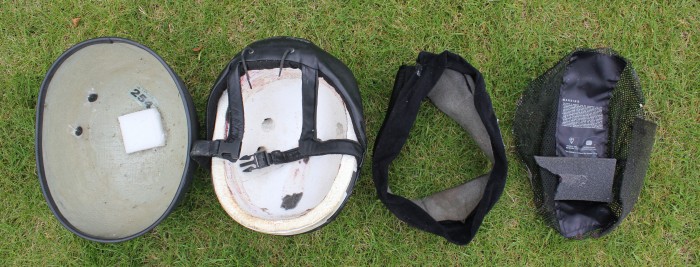Riding Hats

This rider was not seriously injured.     Harry McMillan www.peak-photo.co.uk
Head injury is the commonest cause of injury to horse riders going to hospital. Over the past few decades there has been a reduction in the proportion of fatal head injuries compared to all head injuries amongst horse riders. Over this time, the use of protective hats has increased significantly. It is reasonable to conclude that protective riding hats are responsible for the improved outcome amongst riders suffering a head injury.
The construction of riding hats is essentially the combination of an outer shell around a shock absorbing layer together with an integral harness. There may be additional features for comfort such as a thin textile and foam lining. The shock absorbing layer is compressible – once – so a hat that has had a hard knock should be discarded.
BETA’s guide to Riding Hats gives a good overview of hat standards and testing. Do not buy a hat without it being fitted correctly by a retailer trained to do so.
See also the BHS section on Starting to Ride; Basic Equipment.
Different sporting bodies have slightly different requirements for hats worn at competitions which are covered in their respective rules.
Important points to remember are:
1. Ensure your hat fits correctly - find which size and make fits you best
2. Wear it correctly - harness adjusted and snug, hat not perched on back of head.
3. Discard your hat after any significant impact and buy a new one
4. You will not be allowed to compete at affiliated shows without a hat complying with rules
5. Children under 14 years old must wear a protective hat when riding on the road
fitted correctly - worn correctly - undamaged


